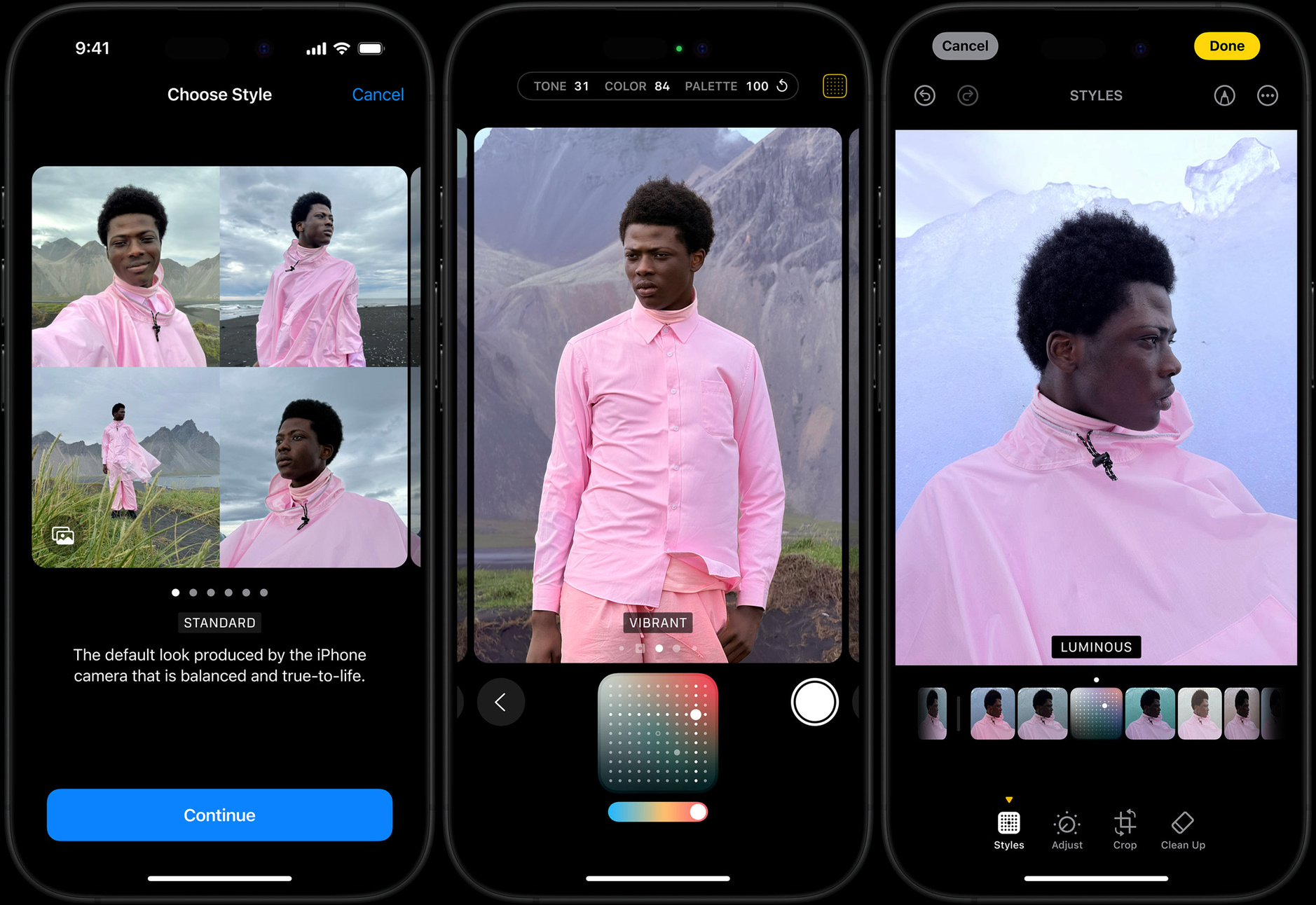„Photographic Styles“, die neuen Filter

The iPhone 16 and 16 Pro get a new generation of Photographic styles that’s different in some notable ways.
First off, it’s editable after the fact. They mentioned this in the video, and I have to admit that I sat there kind of baffled. How can you… edit something generated from deep down in Apple’s photography pipeline… after the fact? Isn’t that just what we’d call a “filter”?
It turns out, not so much, as Camera and Photos Product Marketing Manager Della Huff told me afterward. These new iPhones actually save additional data every time they take a photo, giving Photographic Styles the ability to reconstruct and rebuild photos after capture. Huff shot a picture using a black-and-white Photographic Style, then jumped into Photos and moved it to a different style, one with color—and color appeared in the image. This extra data takes up some extra space in the image file, but it allows users to make creative changes to their photos after the fact, which is pretty amazing.
Still, isn’t applying looks to photos what the Filters feature in the Photos app is all about? Isn’t this duplicative of that? Well, yes, and that’s why for iPhone 16 and 16 Pro users, that Filters interface is gone—because now Photographic Styles are all you need.
Für einen fotografischen Stil entschied man sich bislang nur bei der Ersteinrichtung; drückte den Button in Apples Foto-App dann aber nie wieder. So ging’s zumindest mir.
Diese tiefer-sitzende Bildmanipulation in der Fotoerstellung ist jetzt nicht nur prominenter platziert, sondern nimmt im Gegensatz zu einfachen Filtern individuelle Anpassungen auf verschiedene Fotobereiche vor.
Den Unterschied zu klassischen Filtern beschreibt Apple so:
Im Gegensatz zu Filtern, die oft eine Farbe zu einer gesamten Szene hinzufügen, werden die Anpassungen auf bestimmte Farben eines ausgewählten Stils angewendet. Eine breitere Palette von Stilen gibt Anwender:innen mehr kreative Optionen zum Anpassen der Ästhetik eines Fotos, und mit einem benutzerfreundlichen neuen Steuerkreuz und einem Intensität-Schieberegler für gleichzeitige Anpassungen von Farbtönen und Farben lassen sich Stile noch weiter individualisieren. Diese Anpassungen können schon beim Rendern in der Live-Vorschau durchgeführt, nach Aufnahme eines Fotos angewandt und später sogar wieder rückgängig gemacht werden.